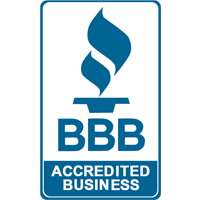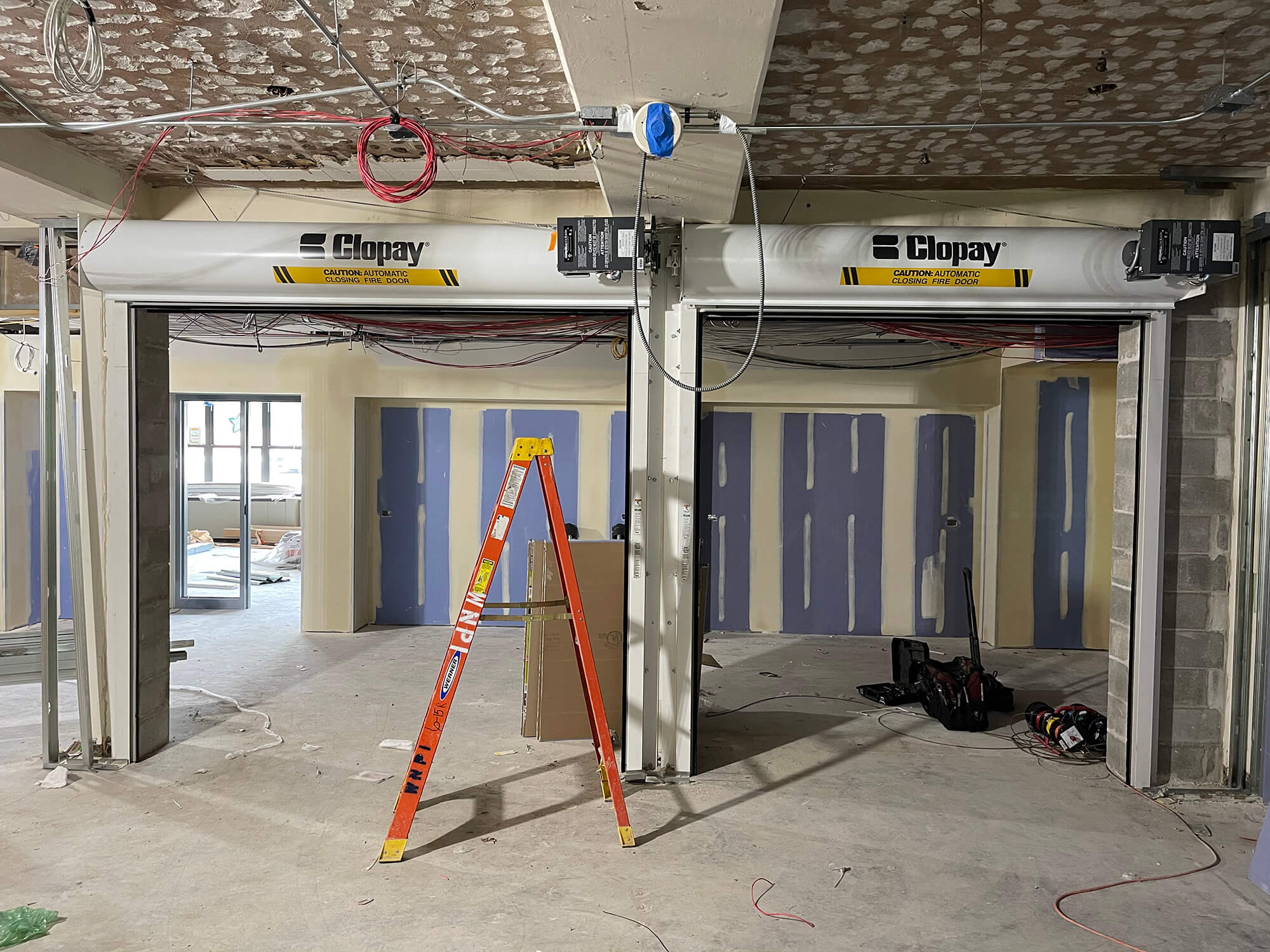Ever wondered about the unsung heroes of fire safety in your facilities? You may not think about it often, but fire doors are the difference between an accident and a tragedy. Today, we’ll be diving deep into the exciting world of fire-rated doors, what their ratings mean, why they’re important and some other helpful fire safety tips. From pedestrian doors to overhead variants and even counter gates, we’ve got you covered!
Fire Doors 101: What Makes a Door “Fire-Rated”?
These doors truly are superheroes in disguise. They are specifically designed and manufactured to resist the heat and stop the spread of fire for a designated period. In order for a door to be “fire-rated” it must go through a series of tests and then be certified by the manufacturer.
Fire endurance- The doors face intense heat reaching up to 1925 degrees F for a potential maximum rating of 180 minutes. If the door stays securely in its frame without any gaps and successfully contains the flames, it earns a certification of 20, 45, 60, 90, or 180 minutes.
Hose stream- Following the fire endurance test, the door faces the hose stream test, in which it’s blasted with water at 30 psi from a distance of 20 feet. It’s worth mentioning that most US building codes usually exempt 20-minute doors from this hose stream test.
Temperature rise- In specific scenarios, these doors don’t just act as barriers to fire but also prevent excessive heat transfer to safeguard building occupants during evacuations. These specialized doors, termed “temperature rise doors,” possess both an hourly rating and a temperature rise rating. The temperature rise ratings can be 250 degrees F, 450 degrees F, or 650 degrees F. This rating illustrates the maximum temperature increase, beyond the ambient, on the non-fire side during the initial 30 minutes of a standard fire test. Notably, a 250-degree F rating is seen as the most rigorous, thus fulfilling specifications even if they call for 450 or 650 degrees F.
Smoke and draft control- Certain doors, like 20-minute doors in corridors with fire resistance ratings or smoke barriers, might also undergo smoke infiltration tests as per UL 1784, the Standard for Air Leakage Tests of Door Assemblies and Other Protective Openings.
How do they withstand all of those tests? The materials they’re made of, including:
- A core of fire-resistant material (like vermiculite, gypsum, or ceramic).
- A layer that prevents heat transfer.
- Seals that expand with heat, blocking the gaps around the door.
Decoding Fire Door Ratings
When you come across doors with ratings like 20, 45, 60, 90, or even 180, you’re essentially peeking into how many minutes that door can withstand a standard fire exposure. A ’90’ rating means the door offers resistance for up to 90 minutes. So, the higher the number, the longer your safety net! Keep in mind that the door fire rating must match the frame rating, if it doesn’t the rating is actually the lower of the two. Here’s a guide to better understand which doors should be used where:

| Description and Use | Wall Rating | Door and Frame Rating |
| Openings that separate buildings or divide a single building into designated fire areas | 4 hours | 180 minutes |
| Openings used in enclosures of vertical communication or egress through buildings (ex. stairwells) | 2 hours | 90 minutes |
| Door and frame assemblies that divide occupancies in a building | 1 hour | 60 minutes |
| Openings in corridors or room partitions | 1 hour | 45 minutes |
| Opening where there is potential for severe fire exposure from the exterior of the building | 2 hours | 90 minutes |
| Opening that has the potential for moderate to light fire exposure from the exterior of the building | 1 hour | 45 minutes |
| Opening in corridors where smoke and draft control is required | 1 hour | 20 minutes |
Different Types of Fire Doors & Their Importance
At United Door and Dock we know how important safety is for a business, especially when it comes to something as potentially devastating as fire. The National Fire Protection Association (NFPA) mandates annual inspections and drop tests on all doors. To help keep the building you work in and the people in it safe, we offer preventative maintenance programs that include inspections as frequently as you need them! We also service and install all fire-rated doors, including:
The Critical Need for Fire Doors in Your Facility
In the United States, fire-rated doors are a requirement in commercial buildings by The National Fire Protection Association (NFPA), International Fire Code (IFC) and The International Building Code (IBC). Non-compliance can result in hefty fines and legal challenges. If that’s not enough, here are a couple of other important reasons you should have them:
Safety First: The primary benefit of these doors is the precious time they provide for evacuation. In a fire, every second counts, and these doors can be the difference between a safe escape and a tragic outcome.
Property Preservation: By containing a fire, these doors can save vast portions of a property from damage, saving businesses potentially millions in repair and replacement costs.
Additional Steps to Boost Your Facility’s Fire Safety

Closing Thoughts
Fire safety is one of those things we often take for granted until we’re faced with a real emergency. By understanding and investing in fire-rated doors, you’re not only ensuring compliance with regulations but also showing genuine care for the safety of everyone in your facility. While we hope this blog is a helpful guide, for more detailed information, always refer to local building codes and professional guidance when installing or maintaining fire doors. United Door and Dock is happy to assist in any questions you may have on how to keep your building safe in the event of a fire. Give us a call, email or check out the live chat to talk to one of our industry specialists.
Remember, when it comes to safety, it’s always better to be proactive than reactive. Here’s to creating safer spaces, one fire door at a time!










